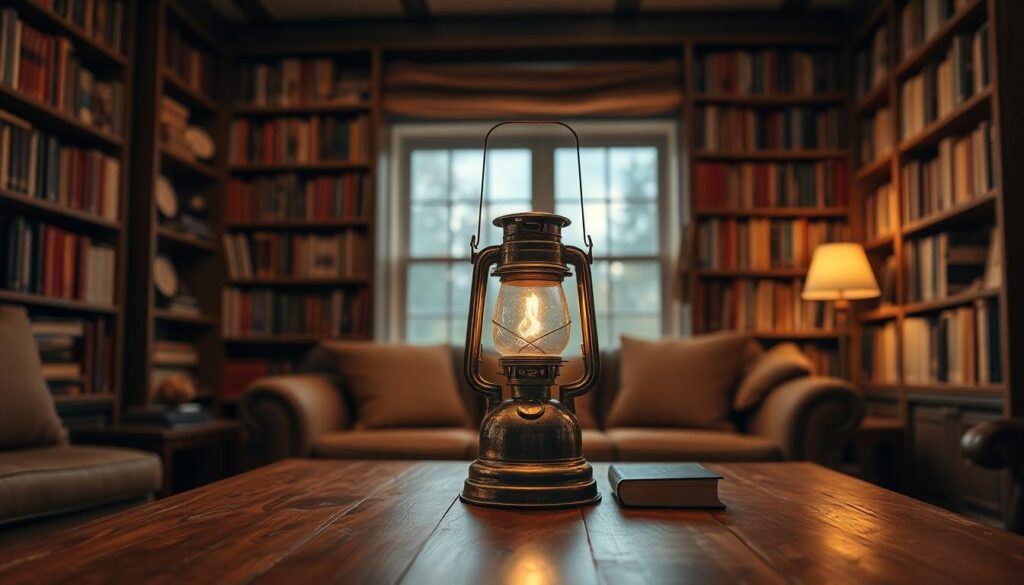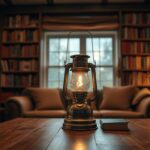Lamp riddles have illuminated our minds for generations, combining the warm glow of nostalgia with the bright spark of intellectual challenge. These clever word puzzles specifically focused on lamps and light sources provide a unique way to test our problem-solving abilities while entertaining friends and family.
We’ve gathered the most brilliant lamp riddles that will light up your next gathering. From simple teasers perfect for children to complex brain-teasers that will challenge even the sharpest minds, there’s something here for everyone. Ready to switch on your thinking cap? Our collection of lamp riddles promises to brighten your day and exercise your mental agility at the same time.
The Timeless Charm of Lamp Riddles: A Puzzling Tradition
Lamp riddles have illuminated human entertainment for centuries, standing as a testament to our enduring love of wordplay and mental challenges. These clever puzzles centered around lamps, light bulbs, and illumination have been shared across generations, bringing families together around hearths and dinner tables since antiquity. Ancient civilizations from Egypt to China used riddles about light sources as both entertainment and educational tools, embedding cultural values while sharpening minds.
Throughout history, lamp riddles evolved alongside lighting technology, from oil lamps to candles to modern LED bulbs, yet their fundamental appeal remains unchanged. People naturally gravitate toward these puzzles because they combine the universal human experience of light with linguistic creativity and logical thinking. The symbolic nature of light—representing knowledge, insight, and revelation—makes lamp riddles particularly satisfying when solved, creating that “aha!” moment we all crave.
What makes lamp riddles especially charming is their accessibility to all age groups and cultural backgrounds. Children delight in simple lamp wordplay that helps develop vocabulary and critical thinking, while adults appreciate the more nuanced challenges requiring lateral thinking. These riddles serve multiple purposes beyond mere entertainment—they strengthen cognitive abilities, enhance verbal reasoning, and foster social connections when shared in groups.
In modern digital era, lamp riddles have found new life on social media platforms and puzzle websites, reaching wider audiences than ever before. Traditional lamp riddles now circulate alongside modern variations that incorporate contemporary technologies and cultural references. Even though technological advances, the basic formula remains unchanged: a clever question about something that illuminates, with an answer that surprises and delights when discovered.
10 Classic Lamp Riddles That Will Light Up Your Mind
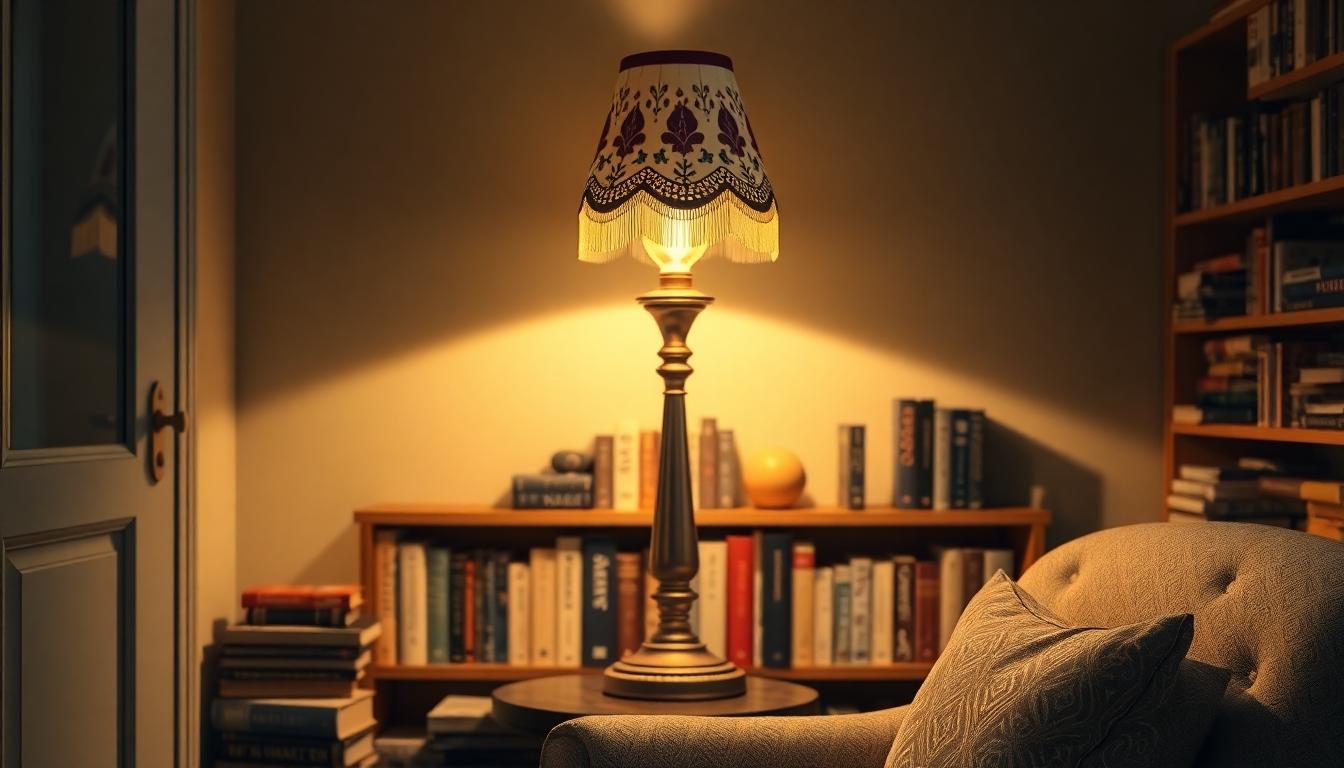
- “I shine in the day, but I’m much brighter at night. Though I’m turned on, I don’t take flight. What am I?”
A lamp is the answer to this classic riddle that plays on the contrast between day and night visibility.
- “I’m the light that sailors used to guide them on the rough seas, with oil or kerosene inside. What am I?”
Ship’s lanterns were essential navigation tools for sailors throughout maritime history, helping them navigate treacherous waters.
- “I was invented in the 19th century and helped people see during blackouts with a twist of a handle.”
Kerosene lanterns revolutionized portable lighting with their innovative design that allowed for easy operation even during power outages.
- “I’ve been a popular symbol of wisdom, often seen beside books in old libraries.”
Scholar’s lamps have long represented knowledge and intellectual pursuit, frequently appearing in illustrations of study spaces and academic settings.
- “I’m an object from the past, often seen in caves and early homes, providing warmth and light.”
Torches served as primitive lighting answers for our ancestors, offering both illumination and heat in prehistoric dwellings.
- “In ancient Egypt, I was made from clay and burned oil to light up tombs and temples.”
Egyptian oil lamps illuminated sacred spaces and guided the deceased into the afterlife according to ancient beliefs.
- “What kind of lamp uses a filament to create light and is commonly found in homes?”
Incandescent lamps dominated household lighting for over a century before more efficient alternatives became widely available.
- “This lamp stands on a table and is commonly used for reading. What type is it?”
Table lamps provide focused illumination for reading and detailed work while adding decorative elements to home interiors.
- “Which lamp is used in a darkroom to avoid light exposure on photosensitive materials?”
Safelights protect photographic materials from unwanted exposure while still allowing photographers to see their work.
- “I have a base and bear no weight, yet over pages, my head can skate. What am I?”
Floor lamps stand tall with their sturdy bases, providing overhead lighting without taking up valuable surface space.
Ancient Oil Lamp Brainteasers
“Way before Edison’s invention, I brought to life the night’s complexion. What am I?”
Oil was the primary fuel source for illumination throughout much of human history, predating electric lighting by thousands of years.
“At olden times, I was the main source of light, filled with oil to burn through the night.”
Oil lamps served as the primary lighting technology for countless generations, from simple clay vessels to ornate metal fixtures.
“Made of clay, I lit ancient halls; my flame danced through rituals and temple walls.”
Clay lamps illuminated sacred spaces across ancient civilizations, playing crucial roles in religious ceremonies and daily life.
Modern Lamp-Themed Mind Benders
“Energy efficient I may be, I light your way so you can see.”
LED lamps represent the cutting edge of lighting technology, consuming a fraction of the energy of traditional bulbs while providing exceptional brightness.
“I’m not the lamp but part of its crew, without me the light would glare at you.”
Lampshades diffuse harsh light while adding style and personality to lamps throughout our homes and offices.
“Vines of power I possess, keeping darkness in distress.”
Electrical cords connect our lamps to power sources, serving as the lifelines that enable modern lighting to function.
“Find me inside a bulb, I’m not a flame but I do light up.”
Filaments convert electrical energy into light and heat, forming the essential component of traditional incandescent bulbs.
“I’m twisted into place, to brighten up the space.”
Light bulbs transform our environments with a simple twist, instantly changing dark spaces into well-lit areas with their illuminating power.
How Lamp Riddles Enhance Critical Thinking Skills

Lamp riddles offer more than just entertainment—they serve as powerful cognitive tools that strengthen mental abilities in surprising ways. Let’s explore how these illuminating puzzles contribute to intellectual development.
Problem-Solving Benefits
Lamp-themed riddles require you to analyze metaphorical language and contextual clues, directly fostering logical reasoning skills. When confronted with a riddle like “I illuminate darkness yet cast no shadow. What am I?”, your brain must systematically evaluate possibilities and eliminate illogical answers. This process strengthens deductive reasoning as you work through potential answers methodically. Research confirms that regularly captivating with such puzzles improves both comprehension and problem-solving abilities across various contexts. The abstract nature of light-based riddles forces you to connect seemingly unrelated concepts, training your mind to recognize patterns and relationships that might otherwise remain hidden.
Creative Thinking Development
Lamp riddles frequently employ abstract associations that push your thinking beyond literal interpretations. They challenge you to reinterpret familiar concepts in new ways, such as connecting illumination to knowledge, guidance, or inspiration. This mental flexibility activates lateral thinking pathways in your brain as you explore unconventional connections between light-related terms and broader metaphorical meanings. Studies indicate that solving riddles boosts creativity by requiring novel word usage and perspective shifts. These cognitive benefits extend beyond puzzle-solving—the same mental agility translates to enhanced innovation in real-industry scenarios and professional settings. Integrating lamp riddles into educational or team-building activities promotes collaborative problem-solving while improving communication skills among participants of diverse backgrounds and abilities.
The Cultural Significance of Lamp Riddles Throughout History

Eastern Traditions and Symbolism
Lamp riddles have flourished in Chinese culture since at least the Northern Song Dynasty (960–1126), eventually becoming a centerpiece of the Lantern Festival by the 17th century. These intellectual games, known as mi (謎), consist of two essential components: the mian (“surface” or the riddle itself) and the di (“base” or the answer). Chinese lamp riddles often employ clever visual puns and character deconstruction techniques, as seen in the classic example: “Four tall mountains / Top to top; / One river down, / One across” – which reveals the answer “田” (tián, meaning “field”) when interpreted as brush strokes forming the character. Literary references to these riddles appear in renowned works like Dream of the Red Chamber, highlighting their cultural importance. During the Qing Dynasty (1644–1911), solving lamp riddles evolved into a widespread social activity that brought communities together during festive celebrations.
Western Interpretations and Adaptations
Western cultures haven’t developed direct equivalents to the traditional Chinese lamp riddles, though cross-cultural exchanges have inspired various adaptations. The fundamental concept of riddles as tools for social bonding and intellectual stimulation aligns with Western traditions of cryptic puzzles and wordplay games. Diaspora communities have played a important role in introducing these cultural practices to Western societies, though the exact integration with lantern displays remains distinctly East Asian. Terms like yin (讔) and sou (廋), ancient words for “hidden” meanings, highlight the sophisticated linguistic structure of these riddles. Academic research by Timothy Wai Keung Chan traces their origins as far back as the Warring States Period (475–221 BCE), though early examples rarely survived in classical literature due to their informal status. Today, lamp riddles continue to thrive in cultural festivals and academic curricula, with universities in Shanghai offering courses dedicated to this traditional art form, preserving their role as both intellectual challenges and important cultural touchstones.
5 Educational Activities Using Lamp Riddles for Children
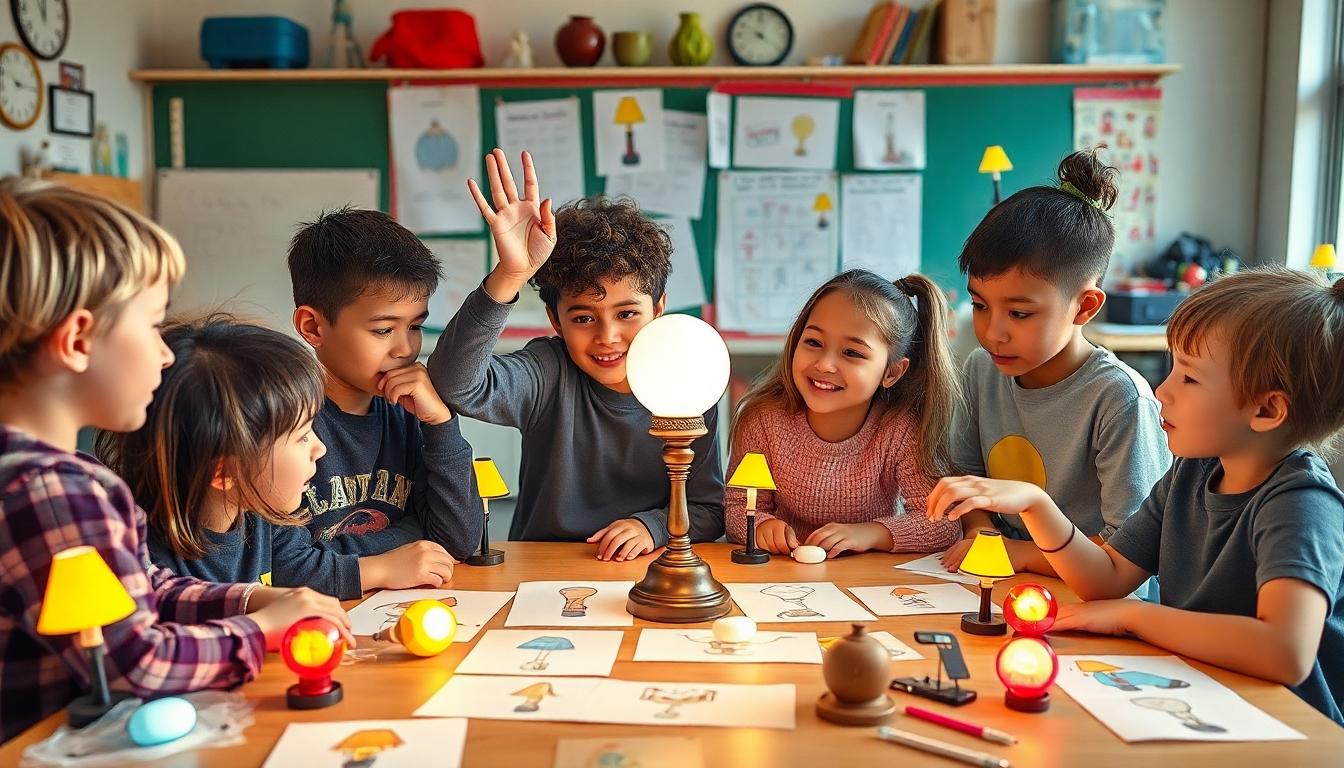
Lamp riddles offer an exciting way to enhance children’s cognitive development while making learning fun. We’ve compiled five captivating educational activities that use lamp riddles to boost problem-solving skills and creativity in young minds.
- Lamp Riddle Creation Workshop – Children develop critical thinking skills when they create their own lamp riddles. Encourage students to brainstorm lamp characteristics, functions, and types before crafting riddles that incorporate these elements. This creative exercise helps them understand riddle structure while strengthening their vocabulary and descriptive language abilities.
- Lamp Riddle Scavenger Hunt – Transform learning spaces by hiding lamp images or actual lamps throughout the classroom or home. Pair each hidden item with a corresponding riddle that leads to the next location. This activity combines physical movement with mental challenge, making problem-solving an adventure rather than a task.
- Group Riddle-Solving Sessions – Gather children for interactive riddle sessions focused on lamp-themed puzzles. Reading the riddles aloud promotes listening comprehension while collective problem-solving fosters teamwork and communication skills. Students benefit from hearing different thought processes as they work toward answers together.
- Lamp-Themed Storytelling Challenge – Following a successful riddle-solving session, ask children to incorporate lamps into original stories. This extension activity bridges logical and creative thinking, allowing students to weave newly acquired knowledge about lamps into narrative structures. Their stories might feature magical lamps, helpful lighting answers, or historical lamp usage.
- Riddle Matching Game – Create a set of cards with lamp riddles on one side and answers on the other. Children can play independently or in pairs to match questions with correct responses. This activity builds memory skills and reinforces knowledge retention through repetition and visual association.
Classroom Implementation Strategies
Effective classroom integration of lamp riddles requires thoughtful planning and structure. We recommend using riddles as collaborative learning tools by dividing students into small groups where they can discuss possible answers, encouraging peer teaching and diverse perspectives. Teachers can use lamp riddles as formative assessment tools to evaluate critical thinking development without the pressure of formal testing. Creating hands-on experiences enhances engagement – consider bringing in various lamp types for students to examine before or after solving related riddles. This tactile connection strengthens concept retention and provides context for abstract riddle content.
At-Home Learning Opportunities
Families can easily incorporate lamp riddles into daily routines for continued learning outside the classroom. Organizing family riddle nights creates quality bonding time while reinforcing problem-solving skills in a relaxed environment. Parents can access many online resources offering age-appropriate lamp riddles, many with accompanying educational content about lighting technology and history. Complementary lamp-themed crafts extend the learning experience – children might create paper lanterns, design lamp shades, or build simple circuits to power model lamps. These hands-on projects connect abstract riddle concepts to tangible creations, deepening understanding through multi-sensory learning approaches.
Lamp Riddles in Literature and Pop Culture
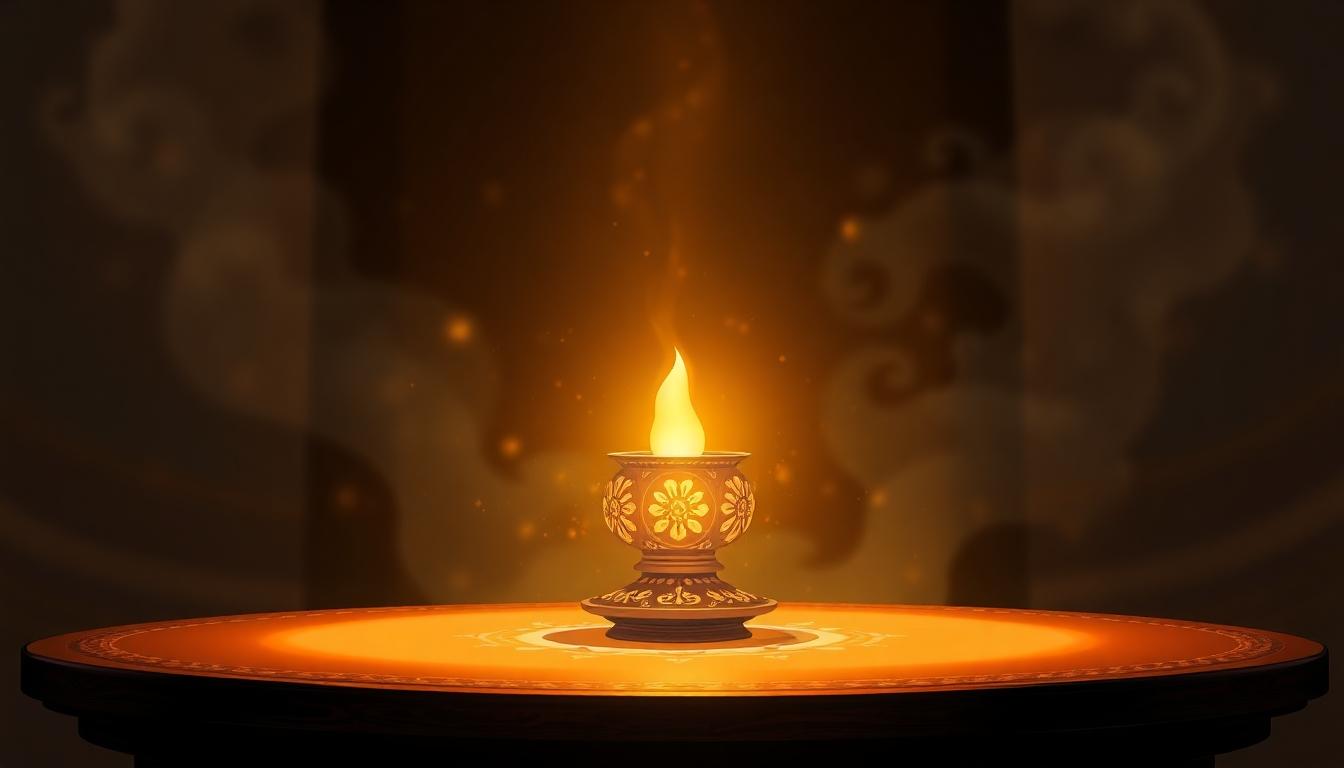
Lamps have illuminated not only our physical spaces but also our cultural imagination throughout history. These luminous objects have become central figures in riddles, stories, and puzzles that span centuries and cultures.
Historical Riddles
Medieval literature contains some of the earliest recorded lamp riddles that continue to intrigue scholars today. Lorsch Riddle 10 presents a fascinating lamp metaphor that evokes imagery of the dawning sun, comparing the lamp to a chapel or palace in its brilliance and significance. This poetic approach to describing a common household object demonstrates the literary value placed on these illumination devices.
Bern Riddle 2 specifically focuses on an oil lamp, highlighting how these everyday objects became common subjects in ancient riddling traditions. These early examples show how lamps served as perfect riddle subjects due to their groundbreaking properties—converting darkness to light and containing fire without being consumed.
Famous Riddles from Mythology and Folklore
The most iconic lamp in folklore is undoubtedly the magic lamp in Aladdin’s tale. This legendary object, which houses a wish-granting genie, has deeply influenced global literature and cinema. The lamp’s symbolic power represents hidden potential and transformation, making it an enduring motif in Middle Eastern storytelling traditions that has captivated audiences worldwide.
Chinese lantern riddles represent another fascinating cultural tradition, though they differ slightly from direct lamp riddles. During festivals, particularly the Lantern Festival, these illuminated puzzles become centers of community engagement and intellectual challenge. The cultural significance of light as a symbol of wisdom and enlightenment permeates these traditions, connecting physical illumination with mental clarity.
Contemporary References in Books and Films
Modern literature frequently employs lamps as powerful metaphorical devices. Fantasy novels often feature magical lamps that serve as portals, sources of hidden knowledge, or vessels containing supernatural entities. These contemporary interpretations build upon ancient associations while creating new meanings for modern readers.
Films have embraced lamp imagery with perhaps the most famous example being Disney’s “Aladdin,” which transformed the ancient folktale into a beloved animation. The magical lamp at the center of this story has become an instantly recognizable cultural icon, representing limitless possibility and unexpected fortune. Beyond explicit lamp riddles, these cinematic representations continue the tradition of using lamps as symbols of discovery and transformation.
Contemporary collections of riddles for both children and adults frequently include lamp-themed puzzles. These modern brain teasers serve multiple purposes—entertainment at social gatherings, cognitive development exercises, and connections to cultural heritage. The enduring appeal of lamp riddles demonstrates how these illuminating objects continue to spark creativity and challenge our thinking in meaningful ways.
How to Create Your Own Original Lamp Riddles

Creating your own lamp riddles can be a delightful way to challenge friends and family while showcasing your creativity. We’ve compiled expert techniques to help you create memorable riddles that illuminate minds.
Use Wordplay
Wordplay serves as the foundation of captivating lamp riddles. We recommend incorporating lamp-related terminology in unexpected ways to create clever puns and double meanings. For example, you might play with words like “bright,” “shine,” or “glow” that have multiple interpretations. Terms like “light bulb” or “switch” can be reimagined beyond their literal meanings to create surprising mental connections for your audience.
Visual Descriptions
Visual descriptions transform ordinary lamps into mysterious objects. We find that describing a lamp’s physical appearance or functionality in unusual ways creates compelling riddles. Focus on distinctive features like shades, stands, or light patterns to create vivid imagery that guides solvers toward the answer. Detailing how light interacts with surroundings can add depth to your riddle while maintaining its lamp-centered theme.
Misdirection
Misdirection adds an element of surprise to lamp riddles. We suggest initially leading listeners toward an obvious solution, then revealing an unexpected answer that makes perfect sense in retrospect. This technique creates those delightful “aha” moments that make riddles satisfying. Strategic placement of clues can guide solvers down one mental path before the twist reveals the true lamp-based solution.
Structural Components of Effective Riddles
Setup and Punchline
Every effective lamp riddle needs a clear setup followed by a surprising conclusion. We structure our riddles to build anticipation through the setup, carefully placing clues that lead to a satisfying punchline. The setup establishes context while the punchline delivers the unexpected connection to lamps or lighting. This structure ensures riddles flow logically while maintaining the element of surprise.
Misdirection and Clues
Strategic placement of clues enhances the challenge of lamp riddles. We embed both obvious and subtle hints throughout the riddle, with some clues intentionally misleading the solver. Balancing misleading elements with genuine clues creates the perfect level of difficulty. Carefully crafted misdirection makes the eventual solution more rewarding when the solver finally connects all elements to the lamp-themed answer.
Simple Language
Simple language ensures your lamp riddles remain accessible to diverse audiences. We avoid overly complex vocabulary or convoluted sentence structures that might confuse solvers. Clear, straightforward language helps maintain focus on the clever concept rather than deciphering complicated wording. This approach makes your riddles more shareable and enjoyable for people of all ages and backgrounds.
Theme Development Techniques
Play on Common Situations
Everyday scenarios involving lamps create instantly relatable riddles. We incorporate familiar situations like reading by lamplight, searching for a light switch in the dark, or the comfort of a bedside lamp. These common experiences resonate with solvers, making the riddle more captivating. Drawing from universal lamp interactions helps forge an immediate connection with your audience.
Explore Different Types of Lamps
Diversifying lamp types expands your creative possibilities. We suggest building riddles around various lamps such as table lamps, floor lamps, streetlights, or specialized lamps like lava lamps or salt lamps. Each type offers unique characteristics to incorporate into your riddles. Historical lamps like oil lamps or gas lanterns provide fascinating elements that can distinguish your riddles from typical examples.
Emotional Engagement
Emotional connections strengthen the impact of lamp riddles. We create riddles that evoke exact feelings through nostalgic references or powerful imagery related to light and darkness. Lamps often symbolize comfort, discovery, or guidance, providing rich emotional territory to explore. Incorporating these emotional dimensions adds depth to your riddles while maintaining their playful nature.
Illuminating Conclusions: The Enduring Appeal of Lamp Riddles
Lamp riddles have truly stood the test of time as cognitive tools that light up our minds while connecting us to a rich cultural heritage. They’ve evolved alongside our lighting technology yet remain fundamentally unchanged in their ability to challenge and delight.
Whether you’re solving a classic riddle about a ship’s lantern or creating your own LED-inspired puzzle we hope you’ll embrace these illuminating challenges with family and friends. The cognitive benefits extend far beyond mere entertainment improving problem-solving skills creativity and social connections.
From ancient traditions to modern educational activities lamp riddles continue to shine brightly in our collective imagination. So next time you switch on a light remember there’s more than just illumination at play—there’s an opportunity for discovery connection and mental growth waiting to be unlocked.
Frequently Asked Questions
What are lamp riddles?
Lamp riddles are word puzzles centered around lamps and light sources that combine linguistic creativity with logical thinking. They’ve been used for entertainment and education throughout history, challenging people to think metaphorically while providing satisfying “aha!” moments when solved. These riddles range from simple children’s puzzles to complex brain teasers for adults.
Why are lamp riddles still popular today?
Despite technological advances, lamp riddles maintain popularity because they blend nostalgia with intellectual challenge. They’ve successfully transitioned to digital platforms, appearing on social media and puzzle websites. Their universal appeal comes from combining the familiar concept of light with creative wordplay, making them accessible across age groups while providing cognitive benefits.
How do lamp riddles improve thinking skills?
Lamp riddles enhance critical thinking by requiring analysis of metaphorical language and contextual clues. They strengthen logical reasoning, deductive skills, and the ability to connect seemingly unrelated concepts. Solving these puzzles activates lateral thinking pathways and improves creative problem-solving abilities that transfer to real-world situations and professional settings.
What cultural significance do lamp riddles have?
Lamp riddles hold special importance in Eastern traditions, particularly Chinese culture where they’ve been popular since the Northern Song Dynasty. They became central to the Lantern Festival by the 17th century, known as “mi” (謎). While Western cultures lack direct equivalents, they’ve adapted riddles for social bonding and intellectual stimulation. Today, these riddles remain important cultural touchstones globally.
How can lamp riddles be used educationally?
Lamp riddles serve as excellent educational tools through activities like riddle creation workshops, scavenger hunts, group solving sessions, storytelling challenges, and matching games. Teachers can implement them as collaborative learning tools and assessment methods. Families can incorporate them through riddle nights and themed crafts, creating multi-sensory learning experiences that enhance cognitive development.
What are some famous lamp riddles in literature?
Literary lamp riddles include medieval examples like the Lorsch Riddle 10 and Bern Riddle 2. The magic lamp from Aladdin represents one of the most iconic lamp references in global storytelling, symbolizing hidden potential. Contemporary literature and film continue featuring lamps as powerful metaphors of discovery and illumination, demonstrating their lasting impact on creative expression.
How can I create my own lamp riddles?
Create original lamp riddles by using wordplay with lamp terminology, crafting vivid visual descriptions, and employing misdirection for surprising twists. Ensure your riddles have clear setups and punchlines, balance challenging clues with solvability, and use simple language for accessibility. Draw inspiration from everyday lamp situations and various lamp types while incorporating emotional elements to make your riddles memorable.
Are lamp riddles suitable for all ages?
Yes, lamp riddles are adaptable for all age groups. Simple versions with straightforward clues work well for children, helping develop basic problem-solving skills. More complex riddles with subtle wordplay and metaphors challenge adults. This versatility makes lamp riddles perfect for family gatherings, educational settings, and social events where participants of different ages can engage at their own level.

